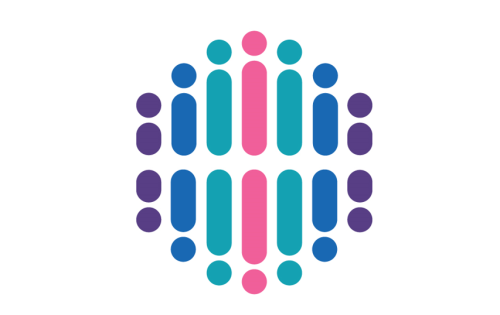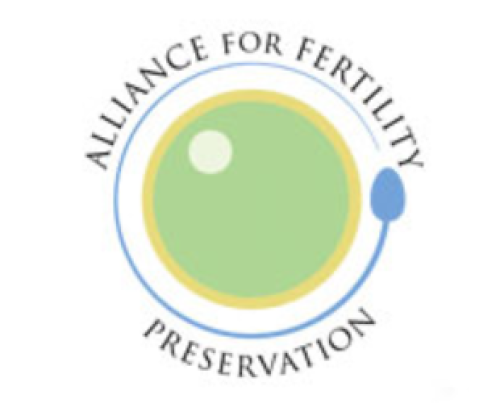Assisted Reproductive Technology
Assisted Reproductive Technology
Certain types of cancer and treatments (such as surgery, radiation, chemotherapy, and ) may damage the female reproductive system and increase the chance of infertility. Risk-reducing surgery to remove the ovaries, tubes or uterus also ends fertility.
Assisted Reproductive Technology (ART) is a multistep process which provides people the option to have biologic children in the future, even if they undergo menopause because of treatment or surgery. The overall process can take anywhere from 2 to 3 weeks from start to finish. For people diagnosed with cancer, this option requires delaying cancer treatment for at least 2 weeks in order to allow time to create eggs and/or embryos which can be frozen and used later in life. Freezing eggs and embryos is the most effective way for women to preserve their fertility.
Note that when we use the terms "female" and "women" we are referring to people assigned female at birth. Here are the steps involved in ART:
Ovulation induction and egg retrieval
Ovulation induction allows the eggs to reach maturity before they are removed from the ovaries.
- Patients take hormone injections for 8-12 days to stimulate the follicles in the ovaries to grow.
- The ovarian response is monitored frequently (using bloodwork and ) so that medication dosage can be adjusted if needed.
- When a sufficient number of follicles are mature (reach 18mm in size), the fertility doctor performs a minor procedure under light sedation to extract eggs using as a guide. This is an outpatient and minimally-invasive procedure that takes less than 15 minutes.
Egg fertilization and embryo transfer
Once the eggs are removed from the body they can be frozen in a process called egg freezing for later fertilization, or they can be immediately fertilized with sperm in order to form embryos. The embryos are grown in the laboratory for up to six days before being transferred to a woman’s womb. Alternatively, if a woman is not ready to become pregnant, the embryos can be frozen for later implantation. The embryo transfer procedure usually does not involve sedation and takes only a few minutes.
Egg freezing and embryo freezing
In a process known as cryopreservation, unfertilized eggs can be removed, frozen, and placed in long-term storage. Unlike embryo freezing, egg freezing does not require sperm to be available for immediate fertilization. This is an ideal option for single women, or those who want to reserve the option to one day have children with a future partner.
The egg-freezing process includes these steps:
- Patients take hormone injections for 8-12 days to stimulate the follicles in the ovaries to grow.
- The ovarian response is monitored frequently (using bloodwork and ) so that medication dosage can be adjusted if needed.
- For the egg retrieval, using light sedation, a fertility specialist extracts the eggs using as a guide. This is an outpatient and minimally-invasive procedure that takes less than 15 minutes. The eggs are frozen the same day.
Embryo Freezing
The embryo-freezing process is similar to the egg-freezing process. After retrieval, eggs are fertilized with sperm to create embryos that are frozen for future implantation. When the woman wishes to become pregnant, the embryo can be thawed, and transferred into the uterus. This transfer process usually does not involve sedation and takes only a few minutes.
Implantation and pregnancy
Women who have removed their ovaries but still have a healthy uterus may be implanted and can carry embryos to term. In order to do so, they need to receive hormones to help sustain the embryo in the early weeks of pregnancy.
Women who have had a hysterectomy or for whom pregnancy is not considered safe will need a gestational surrogate - a woman agrees to carry the baby to term.
Concerns for people newly diagnosed with cancer
Some people with cancer have concerns that delaying or interrupting cancer treatment to freeze eggs or embryos could increase the risk of cancer recurrence or . Most women can start an egg or embryo freezing cycle at any point in the menstrual cycle, limiting treatment delays by a little more than two weeks from referral to chemotherapy. It's important for people to speak with their oncologist to understand the risks and benefits of this option.
Concerns for women at high risk for cancer
Women who are at high risk for cancer who are considering Assisted Reproductive Technology may be concernd that fertility medications could further increase their risk for cancer. Currently, there is no evidence that fertility drugs or ART affect cancer risk and outcomes for people with an ..
In the News
Visit our Partner
More Resources
The following resources can help you locate an expert near you or via telehealth.
Finding fertility experts
- The Oncofertility Consortium maintains a national database of healthcare providers with expertise in fertility preservation and treatment of people who are diagnosed with cancer or at high risk for cancer due to an .
- Livestrong has a listing of 450 sites that offer fertility preservation options for people diagnosed with cancer. Financial assistance may be available to make the cost of fertility preservation affordable for more patients.
Other ways to find experts
- Register for the FORCE Message Boards and post on the Find a Specialist board to connect with other people who share your situation.
- National Cancer Institute (NCI)-designated comprehensive cancer centers have specialists to manage the fertility effects of cancer prevention or treatment.
The following research studies related to fertility preservation are enrolling patients.
Fertility preservation studies for women
- NCT01503190: The Immune System's Response to Young Women's Breast Cancer. This an observational trial looking at tissue samples from patients with Pregnancy-Associated Breast Cancer (PABC) versus non-PABC to understand how the immune system responds.
- NCT05443737: Evaluation of a Telehealth Oncofertility Care Intervention in Adolescent and Young Adult Cancer Patients. The purpose of this study is to evaluate the effectiveness of an intervention to improve young cancer survivors' oncofertility care.
- NCT0301168: Fertility Preservation Using Tamoxifen and Letrozole in Sensitive Tumors Trial (TALES). Infertility as a result of cancer treatment affects the long-term quality of life in survivors of reproductive-age cancers. This trial will study different options for fertility preservation in patients with estrogen-receptor-positive breast cancer.
- NCT00823654: Serum Biomarkers to Characterize the Effects of Therapy on Ovarian Reserve in Premenopausal Women With Breast Cancer or Mutations. This study will look at how cancer treatment affects the ovaries. Researchers will review blood samples before, during and after cancer treatment to look at levels of hormones that are produced by the ovaries and ask patients to fill out questionnaires about their menstrual cycles (periods), overall health and pregnancies.
- NCT01788839: Longitudinal Sexual and Reproductive Health Study of Women With Breast Cancer and . This study looks at how cancer treatment affects sexual and reproductive function. The patient will be asked to give a blood sample to see if and how cancer treatment affects the ovaries and the ability to have children (fertility). These blood draws are optional; patients can participate in the study questionnaire even if they choose not to have their blood drawn.
- NCT01558544: Cryopreservation of Ovarian Tissue. This study hopes to contribute to the development of technologies for freezing and thawing ovarian tissue to preserve fertility. The study is open to women who will undergo treatment or surgery for cancer or women with an who are considering undergoing risk-reducing surgery.
Fertility preservation for men
- NCT02972801: Testicular Tissue Cryopreservation for Fertility Preservation. Testicular tissue cryopreservation is an experimental procedure involving testicular tissue that is retrieved and frozen. This technique is reserved for young male patients, with the ultimate goal that their tissue may be used in the future to restore fertility when experimental techniques emerge from the research pipeline.




